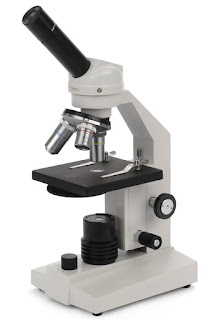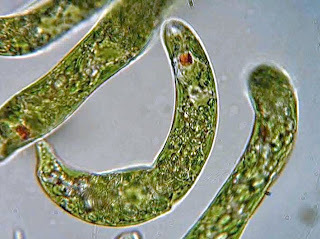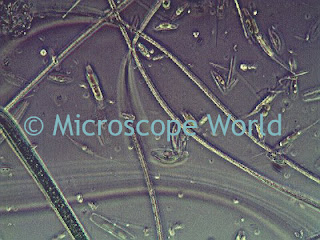In microscopy, an increasing number of investigations are using live-cell imaging techniques to provide critical insight into the fundamental nature of cellular and tissue function, especially due to the rapid advances in fluorescent protein and synthetic fluorophore technology. Because of these advances, live-cell imaging is being utilized in most cell biology laboratories, as well as in the fields of neurobiology, developmental biology, pharmacology, and many other related biomedical research disciplines. A major challenge in performing successful live-cell imaging experiments is keeping the cells in a healthy state and functioning normally on the microscope stage while being illuminated in the presence of synthetic fluorophores and/or fluorescent proteins.
Advances in scientific methods and protocols in the last few decades have allowed cells and cellular activity to be studied in great detail by providing a natural environment through the control of temperature, humidity and gas ratios in an incubator. If the samples are removed for more than a short period of time, the cellular processes begin to exhibit stress, deterioration begins and the tissue or cells are no longer in an optimal state.
It is important that when using a microscope heating stage, the entire bottom of the stage is heated to eliminate temperature gradient. Temperature should remain stable, as fluctuations can damage specimens.
Wednesday, November 30, 2011
Tuesday, November 29, 2011
Well Logging
Well logging, borehole logging, hydrocarbon well logging or mud logging as it is often referred to is the process of creating a detailed record of the geology formations penetrated by a borehole. The log is usually based on visual inspection of samples brought to the surface, or on physical measurements made by instruments that are lowered into the hole. Well logging is performed during many phases of a well's history - either in the beginning when exploratory drilling is in process, during the production phase, or upon completion and abandonment of a well. Boreholes are drilled in search for oil, gas, groundwater, minerals and other geothermal or environmental studies.
In order to detect oil and gas in particular, well cuttings are examined with a low power stereo microscope, often using darkfield or pseudo-darkfield. The darkfield helps in identifying oil staining and the lithology of the borehole rocks. The lithology is a description of the rocks' physical characteristics visible in samples.
In order to detect oil and gas in particular, well cuttings are examined with a low power stereo microscope, often using darkfield or pseudo-darkfield. The darkfield helps in identifying oil staining and the lithology of the borehole rocks. The lithology is a description of the rocks' physical characteristics visible in samples.
The oil and gas industries record rock and fluid properties to find hydrocarbon zones in the geological formations found in a borehole. The entire process will consist of lowering a logging tool into an oil well (hole) to measure the rock and fluid properties. Logging is performed as the logging tools are pulled out of the hole and data is recorded. The drilling depth when well logging can range from 500 feet to 35,000+ feet.
In the oil industry the well and mud logs are typically transferred to the operating company in real time, as these logs are used to make operational decisions about the well and to correlate information about the depths of surrounding wells.
Labels:
borehole logging,
mud logging,
mud logging microscope,
well logging,
well logging microscope
Monday, November 28, 2011
Asbestos Bulk Fiber Identification
Asbestos bulk fiber identification is performed using a polarizing microscope. The most common method used for bulk fiber identification is by following NIOSH 9002 standards. Polarized light microscopy measures the percentage of asbestos as perceived by the analyst in comparison to the standard projections, photographs or experience. The quality of the results are dependent upon the skill and judgement of the operator.
Asbestos bulk fiber identification microscopes that meet NIOSH 9002 standards include a polarized light microscope 100x - 400x with a 10x dispersion staining objective. A stereo microscope with 10x - 45x is also often used.
Dispersion staining is a process where color is imparted to colorless objects with a refractive index measured and used to identify the object being tested. Microscope World's asbestos bulk fiber identification microscopes use 10x annulus dispersion staining objective for the infinity corrected microscope. Different colors are observed when the fiber is oriented parallel or perpendicular to the polarizer direction. You can learn more about the US Center for Disease Control's NIOSH 9002 methods here.
Asbestos bulk fiber identification microscopes that meet NIOSH 9002 standards include a polarized light microscope 100x - 400x with a 10x dispersion staining objective. A stereo microscope with 10x - 45x is also often used.
Dispersion staining is a process where color is imparted to colorless objects with a refractive index measured and used to identify the object being tested. Microscope World's asbestos bulk fiber identification microscopes use 10x annulus dispersion staining objective for the infinity corrected microscope. Different colors are observed when the fiber is oriented parallel or perpendicular to the polarizer direction. You can learn more about the US Center for Disease Control's NIOSH 9002 methods here.
Thursday, November 17, 2011
Microscopic Creatures
This is a simple science project you can perform at home. Gather four different samples of water - for example, some tap water, water from the ocean or a pond, water from the puddle near the curb outside your house, and water from a bird bath.
Using a microscope such as the kids microscope MW1-H1, place a drop of your water sample on a depression slide and put a cover slip over it. Make sure you keep the different types of water samples labeled and separate. What types of bacteria or other creatures can you find? Start out at 40x magnification, then work your way up to 100x and 400x magnification.
Below are some images of things you may be able to identify through your mircoscope.
Euglenas - found in both fresh water and salt water. Learn more about Euglenas here.
Protozoans - most commonly found in pond water, protozoans can easily be viewed with a microscope at 400x magnification. You can learn more about protozoan learning tools here.
Algae - found in the ocean in the forms of kelp and seaweed, these plants come in a variety of shapes and colors.
Using a microscope such as the kids microscope MW1-H1, place a drop of your water sample on a depression slide and put a cover slip over it. Make sure you keep the different types of water samples labeled and separate. What types of bacteria or other creatures can you find? Start out at 40x magnification, then work your way up to 100x and 400x magnification.
Below are some images of things you may be able to identify through your mircoscope.
Euglenas - found in both fresh water and salt water. Learn more about Euglenas here.
Photo courtesy of Eric Guinther.
Algae - found in the ocean in the forms of kelp and seaweed, these plants come in a variety of shapes and colors.
Take notes on the types of microscopic creatures you find in the variety of water collected. If you can capture images of them or sketch the organisms so you can share your findings with your science class.
Labels:
algae,
child microscope,
euglena,
kids microscope,
protozoan,
science project
Thursday, November 10, 2011
Microscope Close Out Specials
Microscope World currently has three microscopes on close-out special. When they are gone, the sale is over. You can view the close-out specials here.
Model 170 microscope has 40x, 100x, 400x magnification, includes a lifetime warranty and free slide kit and DVD accessories. Save over $150!! This microscope is on sale for $179.
Swift Microscope M6001CL-DGL offers 40x, 100x and 400x magnification. The microscope includes a built-in 1.3 mega pixel digital camera and includes software for viewing a live image on your computer. Includes mechanical stage, lifetime warranty and free slide accessories as well as the DVD "Adventures with a Microscope." Save over $199 - on sale for $599.
Model 170 microscope has 40x, 100x, 400x magnification, includes a lifetime warranty and free slide kit and DVD accessories. Save over $150!! This microscope is on sale for $179.
Model 170-MS microscope is similar to the 170 except it also has 1000x magnification and includes a mechanical stage. Save over $200 on this microscope - it is on sale for $329.
Wednesday, November 9, 2011
Marine Life: Serpent Star (Ophiura)
The serpent star looks similar to a starfish. Found in the North-east Atlantic ocean from Norway to the Mediterranean, the Ophiura is a brittle star that lacks brilliant colors, allowing the serpent star to camouflage itself rather than hiding in crevices.
Ophiura photo courtesy of Hans Hillewaert.
The serpent star lives on muddy or sandy substrate, sometimes partially buried. The central disk of the Ophiura will grow to a maximum of about 3.5cm.
This image of Ophiura was captured using a microscope and a Jenoptik C14+ microscope camera.
Monday, November 7, 2011
Thymus and the Immune System
The thymus is a specialized organ of the immune system. The thymus produces T-lymphocytes (T-cells), a critical part of the adaptive immune system. T-cells attack foreign substances. T-cells have receptors that are generated by randomly shuffling gene segments. Each T-cell attacks a different substance. T-cells that attack the body's own proteins are eliminated in the thymus.
Thymus image captured with a biological microscope using a Jenoptik microscope camera.
The thymus is composed of two identical lobes and is located in front of the heart and behind the sternum. The thymus is largest and most active during the neonatal and pre-adolescent periods. By the early teens, the thymus begins to atrophy and thymic stroma is replaced by fat tissue. Nevertheless, residual T lymphopoiesis continues throughout adult life.
Labels:
immune system,
Jenoptik camera,
microscope camera,
thymus
Thursday, November 3, 2011
Science Project: Microorganisms in Soil
Will plants grow if there are no microorganisms in the soil? This science project will help you answer this question.
Microorganisms are very diverse and live in all parts of the environment including water, soil, in the ocean, and even deep within the earth's crust. They are a critical piece of nutrient recycling in ecosystems, as they act as decomposers. Microorganisms include bacteria, fungi, protists and algae to name a few.
Required items for experiment:
In order to figure out if microorganisms help plants grow, you will want to take your soil and divide it into two equal portions. Place one of those portions in a pan and bake it in the oven at 350 degrees for about 30 minutes (ask your parents for help with this!) Baking the soil will kill any microorganisms that are present in it. The other portion of soil should be left as it is.
If you have a microscope - take a small amount of soil from each sample and place it under the microscope. Do you see any microorganisms in the soil that was not baked? You will want to use a high power microscope at 400x magnification in order to view microorganisms.
Plant your seeds in each section of soil (make sure you label the one you baked). Ensure that each section of soil gets the same treatment including equal sunlight, watering and weeding.
What do you notice during the growing process? Did the plants in the soil full of microorganisms turn out differently than those where the microorganisms were killed? Document your results.
Microorganisms are very diverse and live in all parts of the environment including water, soil, in the ocean, and even deep within the earth's crust. They are a critical piece of nutrient recycling in ecosystems, as they act as decomposers. Microorganisms include bacteria, fungi, protists and algae to name a few.
Bacteria is an example of a microorganism.
E. Coli is also a microorganism.
Required items for experiment:
- Soil
- Baking pan
- Seeds
- An area outside or in pots to plant the seeds with sunlight
In order to figure out if microorganisms help plants grow, you will want to take your soil and divide it into two equal portions. Place one of those portions in a pan and bake it in the oven at 350 degrees for about 30 minutes (ask your parents for help with this!) Baking the soil will kill any microorganisms that are present in it. The other portion of soil should be left as it is.
If you have a microscope - take a small amount of soil from each sample and place it under the microscope. Do you see any microorganisms in the soil that was not baked? You will want to use a high power microscope at 400x magnification in order to view microorganisms.
Plant your seeds in each section of soil (make sure you label the one you baked). Ensure that each section of soil gets the same treatment including equal sunlight, watering and weeding.
What do you notice during the growing process? Did the plants in the soil full of microorganisms turn out differently than those where the microorganisms were killed? Document your results.
Wednesday, November 2, 2011
Science Laboratory Safety Guidelines
Below are some suggestions for a safer science laboratory environment.
- Create a safety plan for the lab that all teachers are educated and up to date on.
- When planning a laboratory activity, always ask yourself if there is another investigation that could teach the same concept more safely.
- Require everyone in the laboratory to wear appropriate safety equipment - including visitors.
- If microscopes are being used, make sure cords are not stretched across walking areas - tripping on a cord could cause chemical spills, damaged microscopes and injuries.
- Have a plan in place in the event of an accident.
- Do not allow anyone to work alone in the lab, including teachers.
- Store all chemicals in an appropriate secured room when they are not in use.
- Test all safety systems at a minimum of once a month.
- Test safety shower, eyewash, drench hose, etc. each week and create a safety log to ensure regular testing procedures.
- Do not allow eating and drinking in the science lab.
- Keep only minimum amounts of chemicals on hand. Those that are no longer used should be disposed of properly.
- Maintain a clean working environment.
- Ensure students understand the properties of each chemical being used for experiment, as well as safety procedures.
- Require all science teachers to participate in a NIOSH-approved safety course every five years.
- Consider showing the class a science safety video at the beginning of each semester.
 |
| High School Microscope HS-1M |
Tuesday, November 1, 2011
Digital Child Microscope
The DM52 digital children's microscope includes three magnifications: 40x, 100x, and 400x. The microscope can be used as a standard student microscope, or a digital microscope and is perfect for viewing cheek cells, protozoans found in pond water, or blood cells.
 When plugging the microscope into the USB port on the computer and opening the included software, live images can be viewed on the computer. The microscope includes software for teachers as well as student software. The software can be used to capture still and moving images, text can be added to images and measurements can be made.
When plugging the microscope into the USB port on the computer and opening the included software, live images can be viewed on the computer. The microscope includes software for teachers as well as student software. The software can be used to capture still and moving images, text can be added to images and measurements can be made.
The digital children's microscope includes a slide kit with prepared slides, blank slides, cover slips and a DVD entitled "Adventures with a Microscope." It also includes access to a password protected resource section of Microscope World's website with activities for kids, worksheets and science fun for kids.
You can view more images captured with the DM52 here.
Spider captured at 40x magnification under the DM52 digital kids microscope.
 When plugging the microscope into the USB port on the computer and opening the included software, live images can be viewed on the computer. The microscope includes software for teachers as well as student software. The software can be used to capture still and moving images, text can be added to images and measurements can be made.
When plugging the microscope into the USB port on the computer and opening the included software, live images can be viewed on the computer. The microscope includes software for teachers as well as student software. The software can be used to capture still and moving images, text can be added to images and measurements can be made.The digital children's microscope includes a slide kit with prepared slides, blank slides, cover slips and a DVD entitled "Adventures with a Microscope." It also includes access to a password protected resource section of Microscope World's website with activities for kids, worksheets and science fun for kids.
You can view more images captured with the DM52 here.
Subscribe to:
Posts (Atom)













